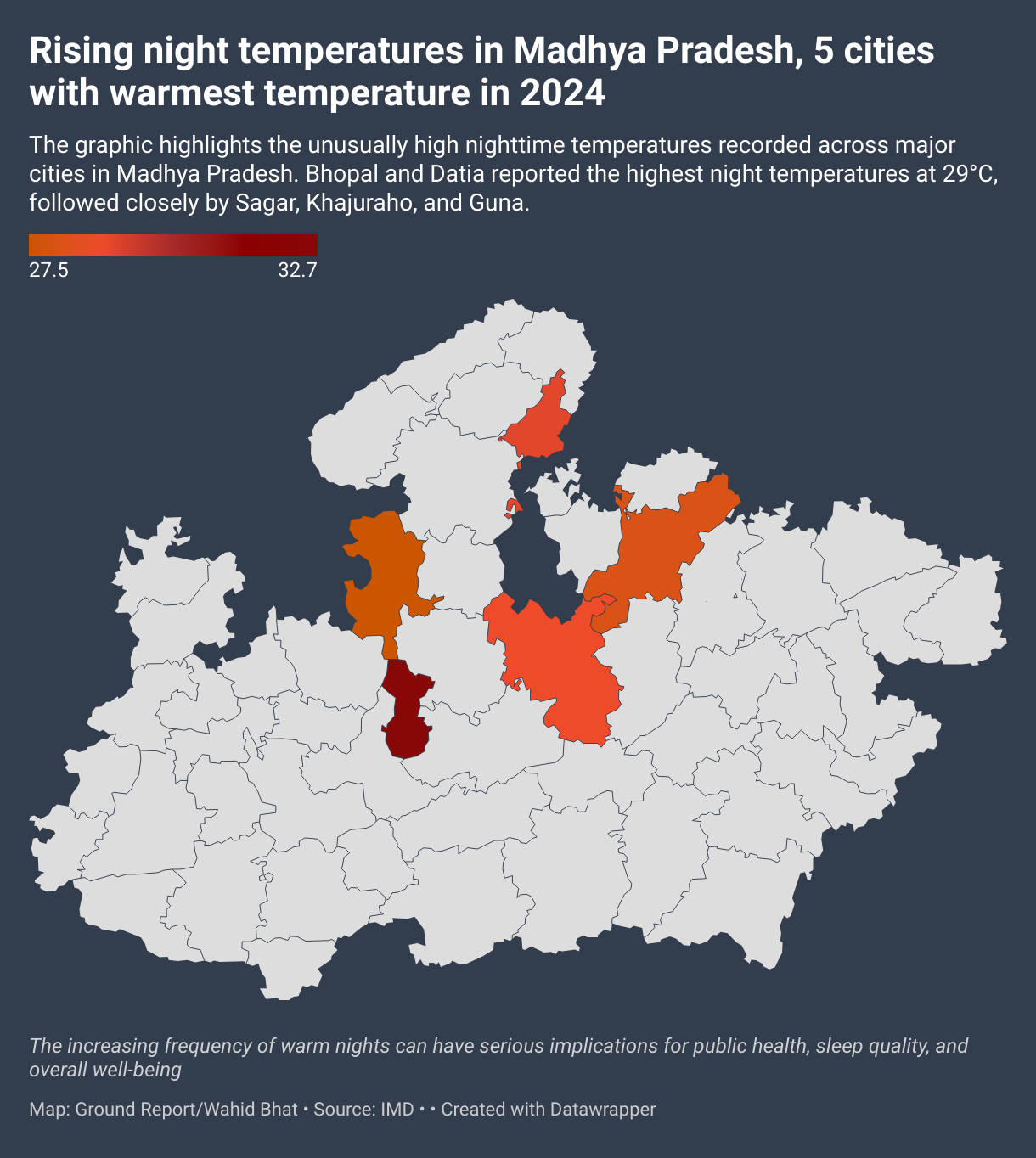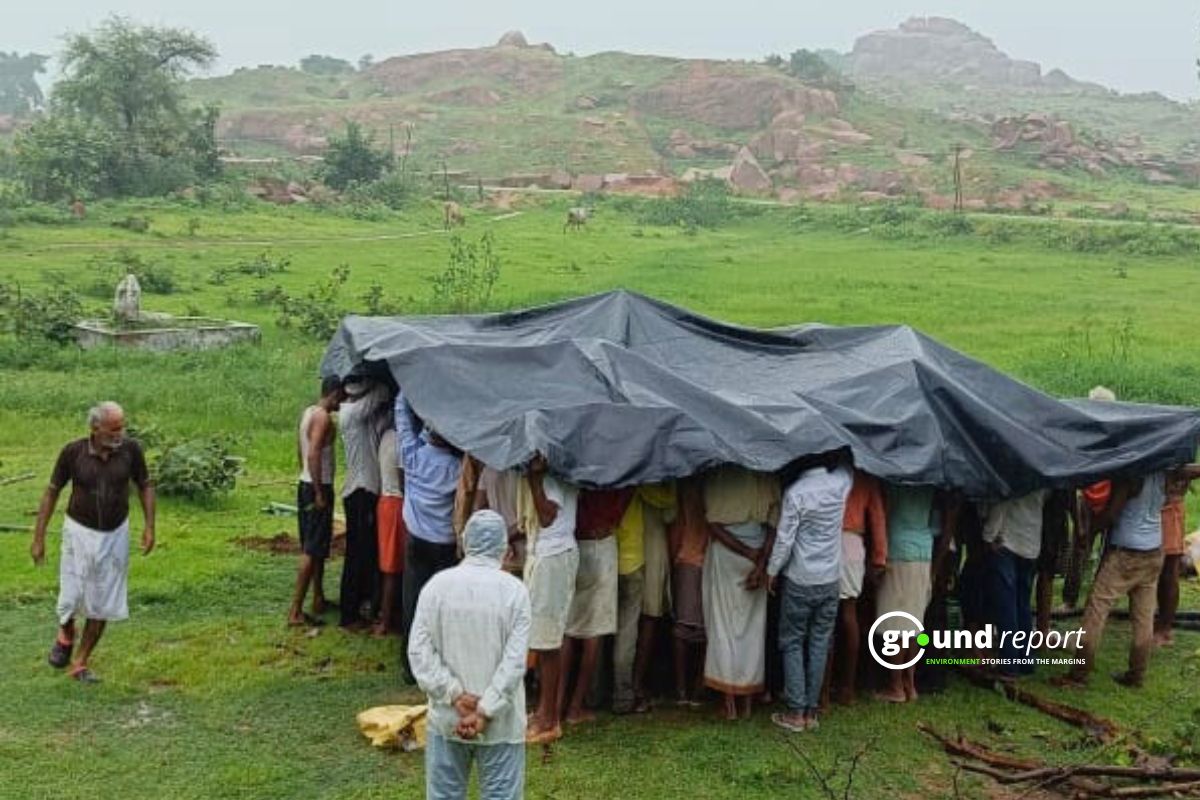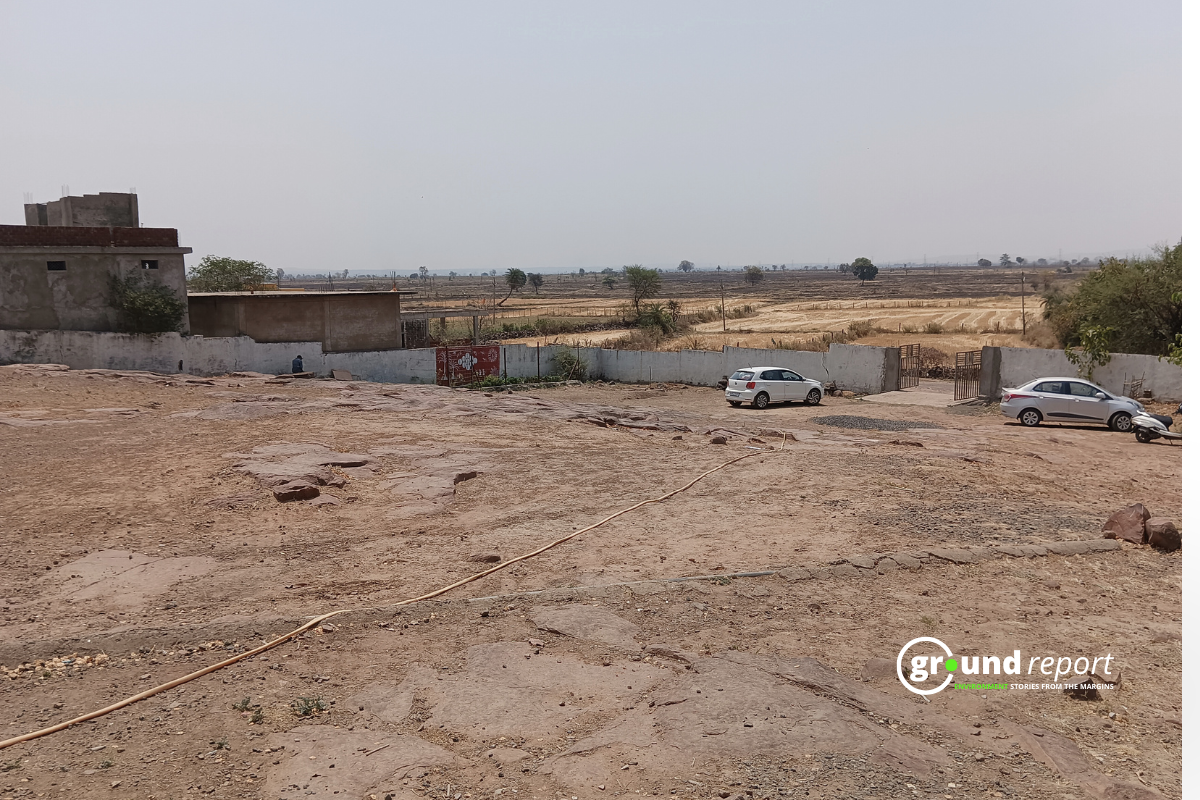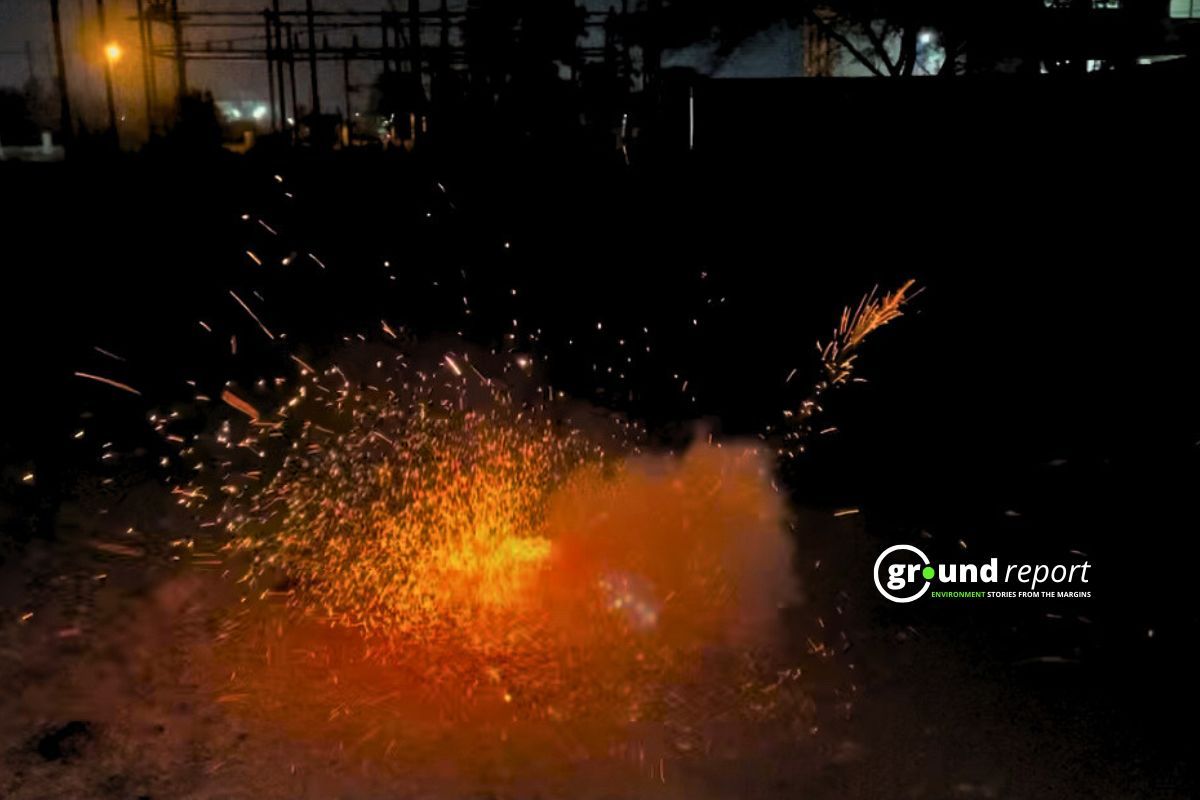Madhya Pradesh has been witnessing unusually warm nights, and it was among the first states to experience warm night conditions as early as March 2024. Other states like Maharashtra, Chhattisgarh, and Gujarat also reported similar trends, with night temperatures staying much higher than normal. On average, Indian cities experienced 718 warm nights (minimum temperature exceeding 25°C) in the last decade. Warm nights increased significantly in several states between 2018 and 2023.
Warmer night rise in India
According to the State of India’s Environment 2025 report, released by the Centre for Science and Environment (CSE) on February 26 this year, Madhya Pradesh saw warm night temperatures in March 2024. In April, night temperatures were recorded at 4°C above the usual level. By May and June, warm nights became even more common, making it harder for people to find relief from the heat. The nights, which were once expected to cool things down, stayed hot, making daily life more difficult. The situation has been especially tough for those without access to proper cooling or shelter.

Sunita Narain, Director General of Centre for Science and Environment (CSE), emphasised the serious impact of rising night temperatures,
“It is getting warmer at night. It is getting hotter and more humid. The impact on health is huge—warmer nights mean the human body does not get time to recover from day temperature.”
As per CSE’s report, the India Meteorological Department (IMD) has started issuing warm-night alerts. According to IMD, a warm night happens only if the maximum temperature during the day is 40°C or more. It also depends on how much the night temperature is higher than usual—if it’s 4.5°C to 6.4°C above normal, it is called a “warm night,” and if it is more than 6.4°C higher, it is a “very warm night.”
A study by Climate Trends, a research group in Delhi, found that the number of warm nights in India has gone up significantly over the last 10 years. Between 2014 and 2023, cities in India had 32% more hot nights, with many places staying above 25°C for more than 700 nights in 10 years.
With warm nights becoming more frequent, experts believe IMD’s criteria for declaring warm nights need to be updated. Aarti Khosla, Director of Climate Trends, stressed the urgency of this issue, “Hot nights will continue to be longer, more frequent, and sleepless, especially for vulnerable populations. Without significant reductions in carbon emissions, these nights will only get worse, making it even harder for people to cope.”
Even if the daytime temperature is below 40°C, high night temperatures can still be dangerous, especially for those without cooling or shelter.
Dr. Sumit Ray, Critical Care Specialist and Medical Director at Holy Family Hospital, explained,
“When both days and nights are hot, the body doesn’t get a chance to cool down, making it harder for people to sleep and increasing the risk of heat stroke. This is especially affecting those without cooling at home, particularly the elderly and babies, as their bodies struggle to regulate temperature properly.”
Without better definitions and action plans, people especially in states like Madhya Pradesh—will continue to suffer.
Madhya Pradesh hit extreme temperatures
In May 2024, Madhya Pradesh experienced an intense heatwave, with several cities recording extreme temperatures. Prithvipur in Niwari district was the hottest, reaching 48.7°C, the highest temperature recorded in the state so far. Many other regions, including Rajgarh, Bijawar, Datia, and Guna, also saw temperatures soaring above 47°C, while Bhopal recorded 44.8°C.
Dr. Praveen Kumar, a scientist at the Regional Meteorological Centre of Bhopal, said,
“Over the past 10-15 years, extreme weather events in Madhya Pradesh have risen considerably. While climate variability is natural, the state has seen an increase in intense events like heatwaves, floods, lightning, and cyclones. The southward shift of the monsoon trough has intensified rainfall, leading to more extreme downpours.”
The UN Intergovernmental Panel on Climate Change (IPCC) has reported that across the world, there are fewer cold nights and more warm nights. Even if global warming is limited to 1.5°C, regions close to the equator, including India, will still experience hotter nights. A 2020 study from the University of Exeter (UK) found that nights are warming faster than days. Between 1983 and 2017, warming over half of the land surface was 0.25°C higher at night than during the day. This happens because the air holds more moisture at night, leading to more cloud cover, which traps heat and prevents it from escaping.
Beyond climate change, urbanisation is also worsening nighttime heat. Sunita Narain pointed out the role of poor city planning in rising temperatures,
“It is about the way we are building our cities. We are destroying green areas, and encroaching on water bodies. More concrete. More vehicles. More air conditioners. All of this adds up, making our cities unhealthy.”
2024 surpassed 1.5°C warming
The recently released State of India’s Environment report cites data from the European Union’s Copernicus Climate Change Service, confirming that 2024 was the first calendar year in which the global average temperature exceeded 1.5°C above pre-industrial levels.
“For Generation Alpha, which is expected to comprise an estimated two billion people by 2025, this represents an inheritance of profound loss,” the report’s authors state. “Climate change has shifted from being an impending planetary emergency to an ongoing crisis.”
In fact, 2024 is officially recorded as the warmest year on record, with global temperatures averaging 1.60°C above the pre-industrial era baseline (1850-1900). Kiran Pandey, Programme Director for Environmental Resources at the Centre for Science and Environment (CSE), remarked, “2024 will be remembered as the year that marked the clear divide between the pre- and post-climate change eras.”
Pandey further explained that rising atmospheric moisture levels—estimated to increase by 7% for every 1°C rise in global temperature—are exacerbating extreme weather events.
The rise in warm nights across Madhya Pradesh and India is a serious concern. With 2024 being the first year to cross 1.5°C of global warming, the climate crisis is no longer a future threat—it is happening now. Hot nights make it harder for people to recover from the daytime heat, increasing health risks like heatstroke, especially for those without proper shelter or cooling.
Madhya Pradesh’s extreme temperatures show how urgent the situation is. If action isn’t taken soon, these heatwaves and warm nights will only get worse. Experts are calling for updated weather guidelines, stronger climate policies, and better city planning to help people cope. Reducing carbon emissions, increasing green spaces, and improving cooling options are key steps to prevent even hotter nights in the future. If we don’t act now, life will become even tougher for millions, especially in heat-prone areas like Madhya Pradesh.
Support us to keep independent environmental journalism alive in India.
Keep Reading
Mission aatmanirbharta in pulses: MP farmers remain skeptical
On Ground: Plastic mulching boosts yield but harms soil health
Chhindwara’s maize-ethanol dream: promise vs reality
Erosion ravages Chambal: puts farmers, biodiversity at risk
Follow Ground Report on X, Instagram and Facebook for environmental and underreported stories from the margins. Give us feedback on our email id greport2018@gmail.com.
Don’t forget to Subscribe to our weekly newsletter, Join our community on WhatsApp, and Follow our YouTube Channel for video stories










